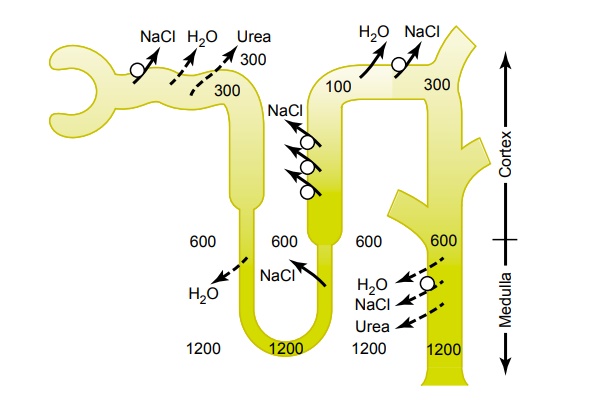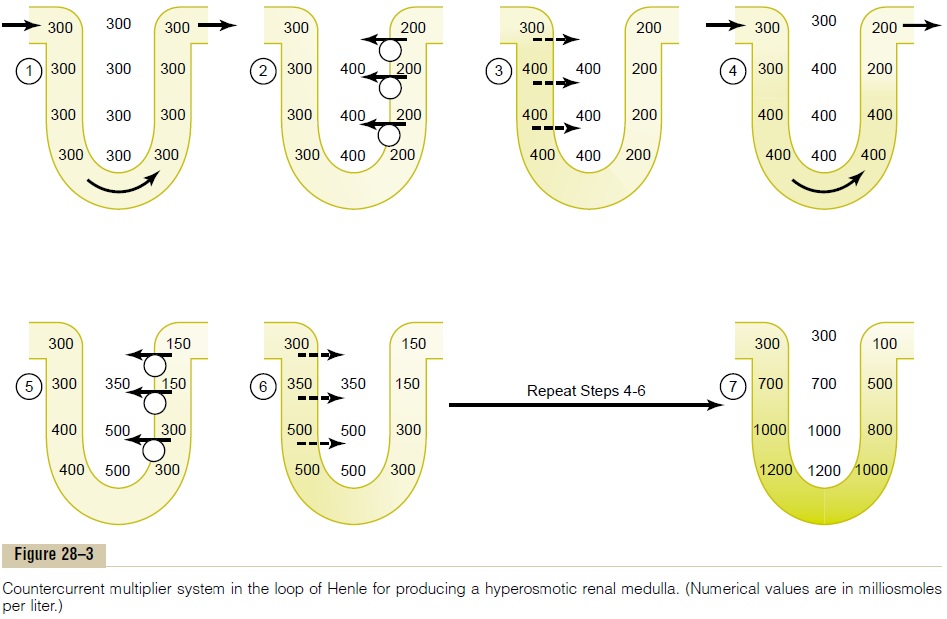Chapter: Medical Physiology: Regulation of Extracellular Fluid Osmolarity and Sodium Concentration
Role of Distal Tubule and Collecting Ducts in Excreting a Concentrated Urine

Role of Distal Tubule and Collecting Ducts in Excreting a Concentrated Urine
When the tubular fluid leaves the loop of Henle and flows into the distal convoluted tubule in the renal cortex, the fluid is dilute, with an osmolarity of only about 100 mOsm/L (Figure 28–4). The early distal tubule further dilutes the tubular fluid because this segment, like the ascending loop of Henle, actively transports sodium chloride out of the tubule but is rel-atively impermeable to water.

As fluid flows into the cortical collecting tubule, the amount of water reabsorbed is critically dependent on the plasma concentration of ADH. In the absence of ADH, this segment is almost impermeable to water and fails to reabsorb water but continues to reabsorb solutes and further dilutes the urine. When there is a high concentration of ADH, the cortical collecting tubule becomes highly permeable to water, so that large amounts of water are now reabsorbed from the tubule into the cortex interstitium, where it is swept away by the rapidly flowing peritubular capillaries.
The fact that these large amounts of water are reab-sorbed into the cortex, rather than into the renal medulla, helps to preserve the high medullary intersti-tial fluid osmolarity.

As the tubular fluid flows along the medullary col-lecting ducts, there is further water reabsorption from the tubular fluid into the interstitium, but the total amount of water is relatively small compared with that added to the cortex interstitium. The reabsorbed water is quickly carried away by the vasa recta into the venous blood. When high levels of ADH are present, the collecting ducts become permeable to water, so that the fluid at the end of the collecting ducts has essentially the same osmolarity as the interstitial fluid of the renal medulla—about 1200 mOsm/L (see Figure 28–3). Thus, by reabsorbing as much water as possible, the kidneys form a highly concentrated urine, excret-ing normal amounts of solutes in the urine while adding water back to the extracellular fluid and com-pensating for deficits of body water.
Related Topics